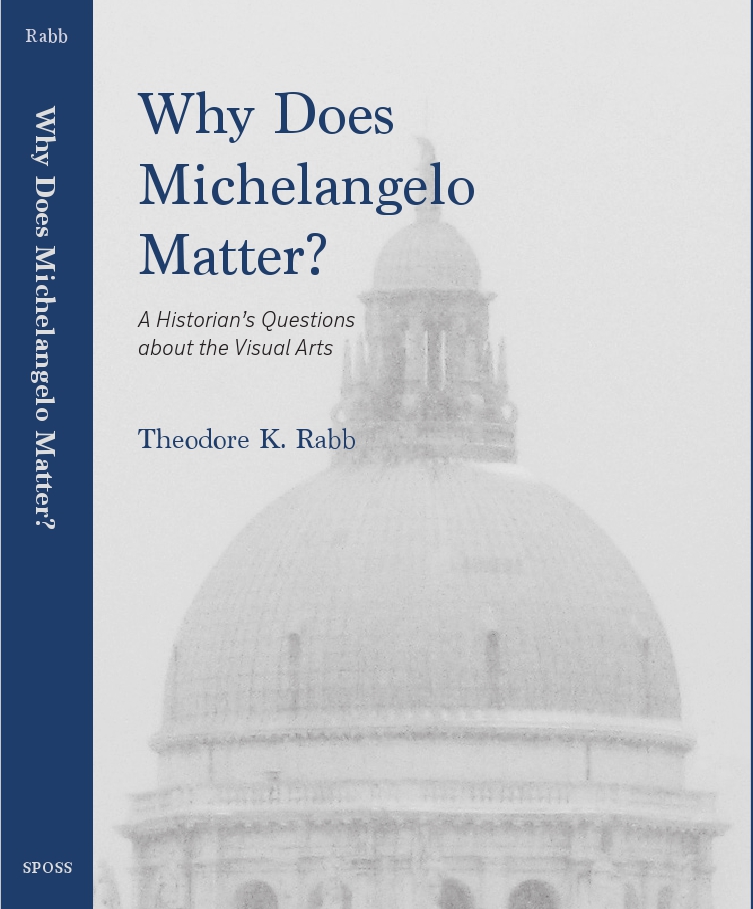
![]()
What kind of lessons can historians learn from the arts? This is a question that has concerned Theodore Rabb since the 1970s. In articles and reviews, he has tried to encourage his fellow-historians to recognize that visual evidence can be as important as the texts on which they usually base their arguments.
The focus of this book has been on European history, but the chronological sweep has stretched from the late Middle Ages to the 1920s. And all forms of imagery—drawing, painting, engraving, sculpture, and architecture—have been included. The goal in all cases has been to see how the arts can illuminate the past, and to suggest that historians ignore these sources at their peril.
To establish the importance of the arts, the title essay discusses Michelangelo—not as the provider of insights into sixteenth-century Italy, but as a historical actor whose work is essential to an understanding of the present as well as the past. And a similar aim guides the essays that follow. Divided into sections that concentrate on specific topics or regions, they are shaped as questions whose answers demonstrate the ways that historians can learn from the arts.
Much has changed in historical scholarship over the past fifty years, and the willingness to examine the arts as crucial evidence has advanced. These essays reflect that growing interest, and encourage an ever broader engagement with the images that every human society has produced.
Praise for the book:
"This is a marvelous introduction to Renaissance, Baroque, and later art that also doubles as an eloquent manifesto for the historical usefulness of images. The impressive interdisciplinary scope of these essays sheds new light on multiple dimensions of early modern European history while transcending time and place. Moreover, Rabb’s prose style, erudition, and perspicuity set a new benchmark for the writing of cultural history. This book should be required reading for every historian, everywhere, regardless of their area of specialization. It should also be ardently recommended to anyone who yearns to be truly learned."
—Carlos Eire, Professor of History and Religious Studies, Yale University
"Ted Rabb is one of the few historians as comfortable with both visual and verbal evidence. In this masterly collection, he guides us through the history of western art from the early Renaissance to twentieth-century Germany to raise big questions and weigh great reputations. There is something for everyone in his bursting Wunderkammer of a book."
—David Armitage, Professor of History, Harvard University
Theodore K. Rabb was Emeritus Professor of History at Princeton University at the time of his death in early 2019. Throughout his long career, he was deeply interested in the connections between history and other academic disciplines. He co-founded The Journal of Interdisciplinary History, first published in 1970, of which he remained a co-editor. Principal historian for Renaissance, a six-part PBS Television series that was nominated for an Emmy Award in 1993, he also served in various positions for the American Historical Association, National History Day, the National Endowment for the Humanities, and the National Council for History Education. He was on the committee that issued the National Standards in World History in 1994. His publications included Enterprise and Empire (1967); The Struggle for Stability in Early Modern Europe (1975); The New History (1982); Climate and History (1984); Renaissance Lives (1993); Jacobean Gentleman (1998); The Last Days of the Renaissance (2006); A Sixteenth-Century Book of Trades: Das Ständebuch (2009); and The Artist and the Warrior (2012).
350 pages. 10 illustrations. © 2018.
Order through Amazon
Cloth ISBN 978-0-930664-31-2. $45.00
Paper ISBN 978-0-930664-32-9. $25.00